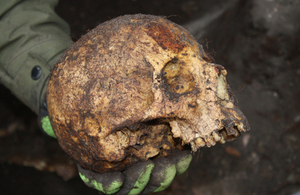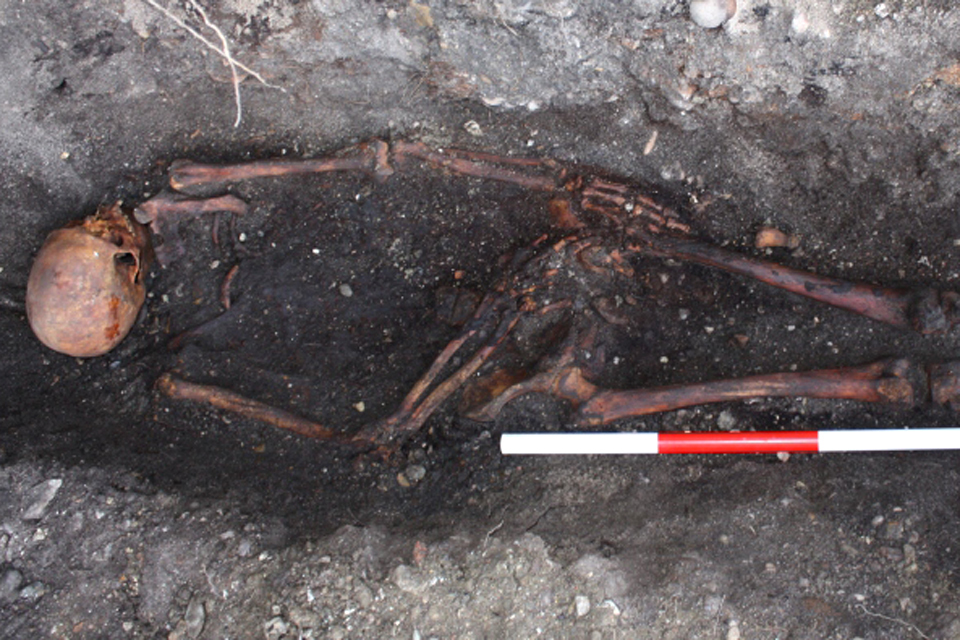Storms unearth 19th century remains on MOD island
Storms and flooding have revealed human remains thought to date from the 19th century on a disused MOD island in Portsmouth Harbour.

Presumed early 19th century male skull [Picture: via MOD]
Sand on the beach and foreshore of the site, known as Burrow Island, was washed away in the severe winter weather conditions, exposing the remains of several individuals.
The Defence Infrastructure Organisation (DIO) carried out emergency recovery work at the site, also known as Rat Island, after a member of the public alerted the police to the remains.
The team, which included recovering battle-injured soldiers from MOD’s Operation Nightingale project, began detailed excavation work in early-February, once the Ministry of Justice gave the go-ahead.
Forensic archaeology and anthropology researchers from Cranfield University’s Forensic Institute, a close strategic partner of the MOD Defence Academy, will analyse the remains.
The DIO team returned recently to complete the recovery of 4 of the individuals and have sent the remains to be cleaned at Wessex Archaeology before analysis at Cranfield University.

Presumed early 19th century male skeleton [Picture: via MOD]
Commenting on the find, DIO senior archaeologist Richard Osgood said:
It’s always exciting being part of a rapid reaction force! We were only told about it 3 days before we needed to get to the site and establish exactly what had been found. It is important for DIO to undertake proper stewardship of the cultural heritage of MOD’s estate.
It was great having recovering soldiers from Operation Nightingale on the team. It’s rewarding that this programme to help soldiers wounded in Afghanistan recover and gain new skills is proving to be so successful for them and helpful to my team.
Commenting on their forensic work, Cranfield University’s Dr Nicholas Márquez-Grant and Dr Kelly Domoney said:
It has been a great opportunity to work alongside our MOD partners in this project. Our small team of forensic archaeologists and anthropologists were privileged enough to provide an input into search and identification of human remains on site.
Post-excavation work in our laboratories should contribute to shedding light on the living conditions of those individuals and the history of Rat Island.
These types of projects highlight the value of bringing together a number of disciplines to reconstruct the past. We certainly look forward to continuing this exciting project.
Once the analysis by the university is complete it is hoped that the origins of the individuals can be identified, as well as their age-at-death, sex, stature and any evidence of disease and injury.
It is possible that the individuals were either convicts or prisoners of war of French or American origin. The site is a known convicts’ burial ground and the individuals probably came from the floating prisons which were moored in the harbour.
The DIO archaeology team works as part of a wider conservation team who advise on over 700 MOD-owned scheduled monuments, as well as over 1,000 listed buildings, 170 sites of special scientific interest, and 130 internationally-designated nature conservation sites.
Rat Island is near to Her Majesty’s Naval Base Portsmouth, HMS Victory and HMS Excellent. The island has not been actively used by the armed forces for over 40 years.